This post may contain affiliate links. We may receive a small commission, at no cost to you, if you make a purchase. Read Disclosure.
Looking for travel tips on what to do in Beijing? Then you’ve come to the right place! Beijing is the bustling capital of China and is known for being a treasure trove of cultural landmarks, including temples, palaces, and sprawling urban parks.
Whether you’re staying for a few days or a week, you’ll find you’ll never run out of things to do in Beijing – there’s so much to see and explore.
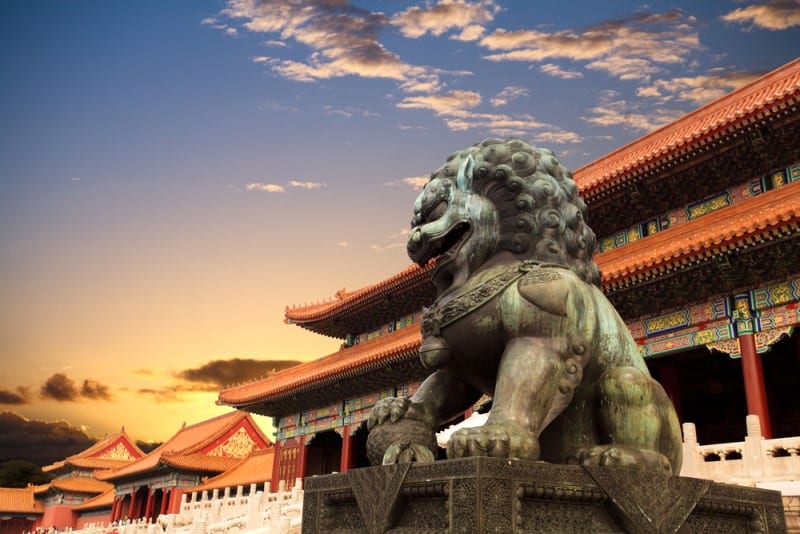
As part of our city guides series, we interviewed Stephen Whale who lived in Beijing, China, and is well placed to talk about the top attractions in the city.
Stephen shares with us his insider Beijing travel tips and knowledge on things to do in Beijing for those looking for the best places to see, eat, stay, drink, and explore.
- Is Beijing Worth Visiting?
- Things to Do in Beijing
- 1. Get Lost at The Forbidden City (Imperial Palace)
- 2. Pay Respects at Tian'anmen Square
- 3. Try Skewered Insects at DongHuaMen Night Market
- 4. Be Enchanted By The Temple of Heaven
- 5. Visit the Lama Temple (Yonghe Temple)
- 6. Visit the Arts Districts
- 7. Take a Day Trip to The Great Wall of China
- 8. Admire the Birds Nest
- 9. Explore The Summer Palace
- 10. Look Out For Beijing's Modern Architecture
- 11. Try the Local Cuisine
- 12. Enjoy a Drink in Sanlitun
- 13. Watch an Evening Performance
- 14. Hit the Shopping Malls
- 15. Attend a Festival in Beijing
- 16. Head to the parks
- 17. Get a Foot Massage
- 18. Visit the Ming Tombs
- 19. Admire Views from The Bell Tower/ Red Drum Towers
- Getting To and Around Beijing
- Finding WiFi in Beijing
- Best time of year to visit Beijing
- Where to stay in Beijing
- Final Thoughts
- More China Travel Guides
- Pin to Share on Pinterest
Is Beijing Worth Visiting?
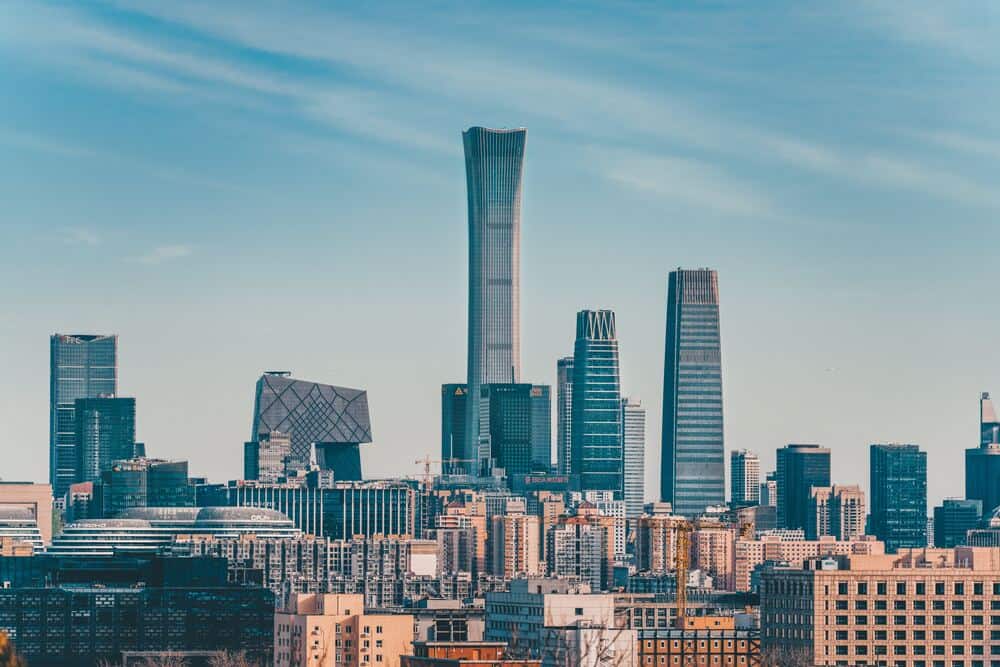
Beijing is the capital of the most populous nation on earth and home to some of the most iconic tourist attractions. It has a long and fascinating history, and some of the countries oldest landmarks are located in the city – so for history buffs, it’s definitely worth visiting.
It’s also the closest city to the Great Wall of China, which is one of the main reasons why people visit Beijing. But aside from that, Beijing has plenty to offer.
It’s also a city undergoing tremendous change, so it’s worth visiting Beijing soon before the last of the traditional streets and hutongs are bulldozed in the name of progress.
Things to Do in Beijing
Beijing is not short of landmarks and places to visit. Below is a list of some of the most unmissable attractions in Beijing that you simply cannot miss.
A couple of warnings: avoid Beijing Zoo – it’s one of the few places in northern China to see Giant Pandas, but the living conditions are terrible.
Take the time to travel to Chengdu and visit the Panda Conservation Base instead. It’s still a bit questionable, but they’re at least helping the species.
1. Get Lost at The Forbidden City (Imperial Palace)
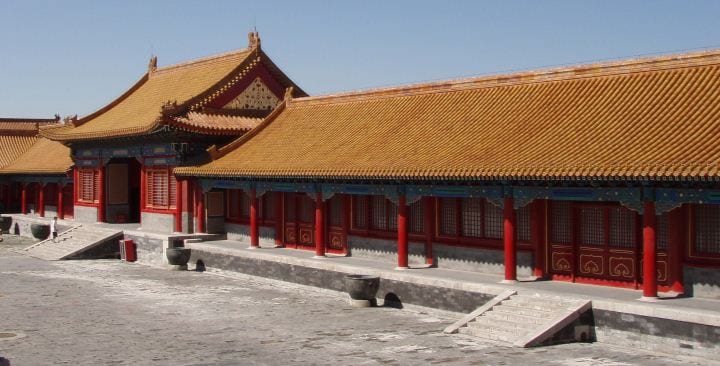
The big three things to do in Beijing are Tian’an’men Square, the Forbidden Palace, and Temple of Heaven.
The Forbidden City is a huge complex that stands as a testament to China’s rich history.
This iconic city, also known as the Imperial Palace, was built during the Ming Dynasty, and served as the imperial residence for emperors and empresses for over 500 years, housing emperors and their retinues.
Its significance lies not only in its grandeur but also in its symbolic representation of power and authority.
The intricate design, with its elaborate palaces, stunning courtyards, and ornate decorations, transports visitors to a time where emperors once ruled with absolute sovereignty.
It’s one of the most important landmarks in the city, so be sure to add it to your to-do list.
2. Pay Respects at Tian’anmen Square
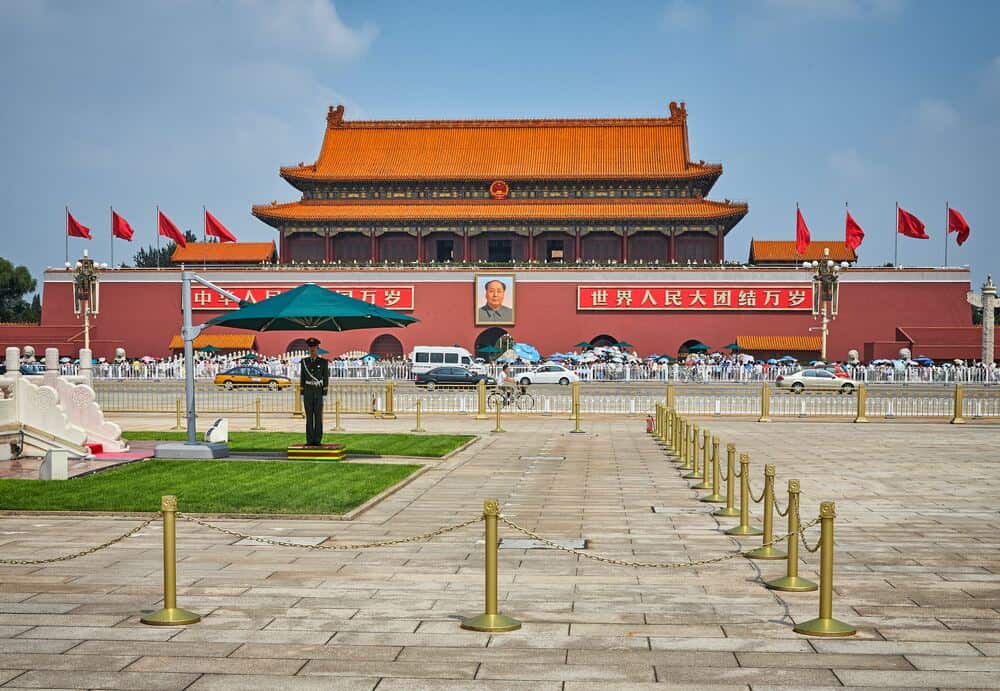
Tian’anmen Square is an expansive square, spanning over 440,000 square meters, and has witnessed countless pivotal moments throughout the country’s history.
From historic celebrations to political demonstrations, it has served as a gathering place for the Chinese people for centuries.
Tian’anmen Square holds deep symbolic value as a testament to the resilience and unity of the Chinese nation.
It’s also surrounded by iconic landmarks like the Monument to the People’s Heroes, National Museum of China, and the Great Hall of the People.
Spend any time in Tian’an’men or Wangfujing and it’s inevitable that some friendly students will approach you looking to practice their English.
Chat to them by all means, but don’t accept their invitation for a drink as it turns into an expensive scam.
Likewise, ignore anyone who offers to show you some cut-price works by art students.
3. Try Skewered Insects at DongHuaMen Night Market
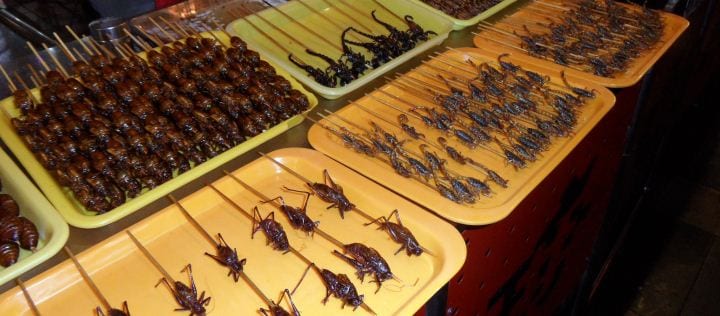
What better way to end a day than with a trip to DongHuaMen night market to sample the unusual foods on a stick, such as seahorses and scorpions.
This is a culinary haven for those adventurous foodies. With a rich history dating back centuries, this bustling night market has become an iconic destination for locals and tourists alike.
If you’re not brave enough to try skewered insects, how about trying a sizzling hotpot instead? The market embodies the spirit of Beijing’s vibrant street food culture, and is one of the best places to eat in the city.
4. Be Enchanted By The Temple of Heaven
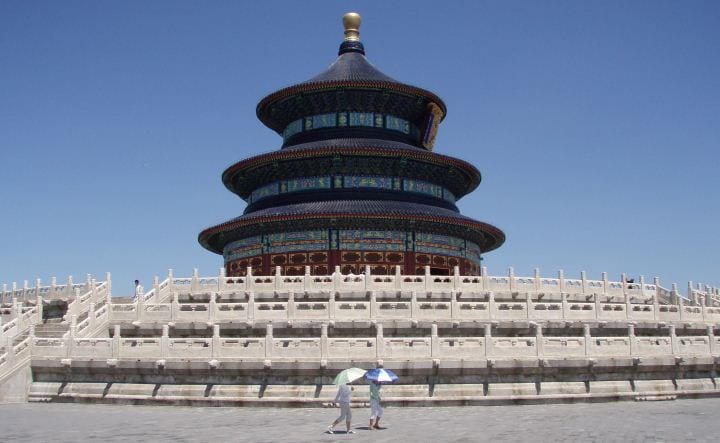
The Temple of Heaven is an architectural marvel, built during the Ming Dynasty, and is a sacred site where emperors once performed ancient rituals to ensure a bountiful harvest.
The Temple of Heaven holds a special place in Chinese folklore, as well as being famous for its stunning design, with intricate details and magnificent color palettes.
Surrounded by tranquil gardens, it’s one of the best places to visit if you need to escape the chaos of Beijing’s traffic and honking.
5. Visit the Lama Temple (Yonghe Temple)
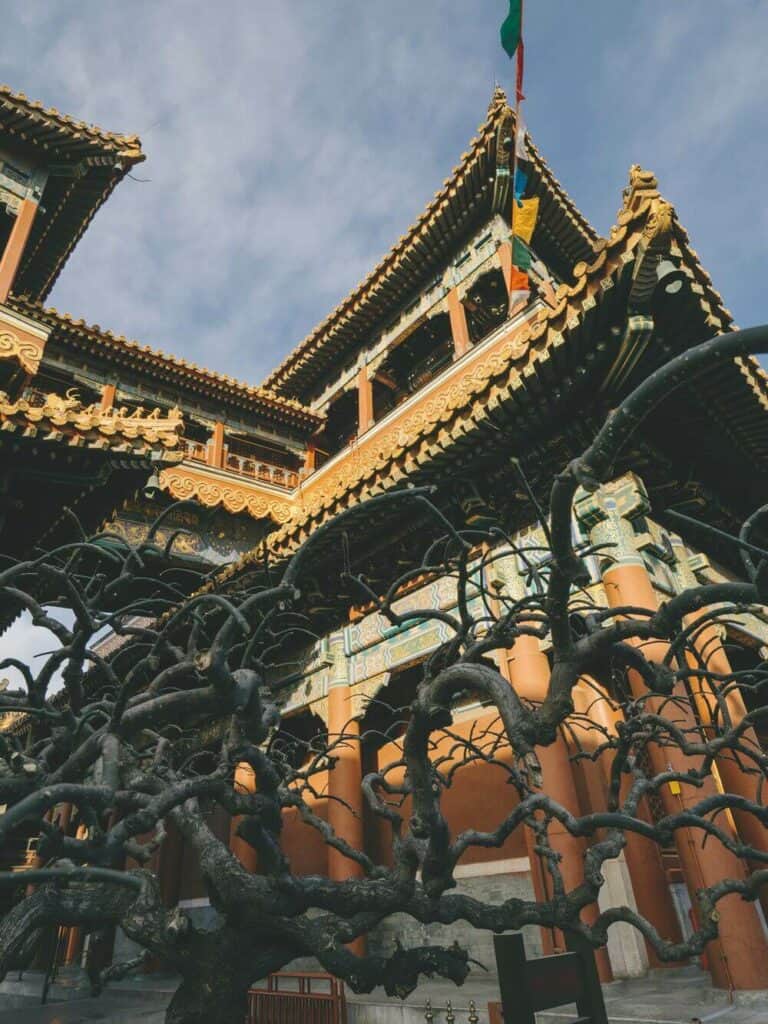
Other Beijing attractions you cannot miss are the ornate but busy Lama (YongHe) Temple or the nearby Confucius Temple that is generally much more serene.
The Lama Temple, also known as Yonghe Temple, is a Tibetan Buddhism temple that dates back to the early Qing Dynasty.
It was once the royal residence of Prince Yinzhen before he ascended to become Emperor Yongzheng.
Today, it’s considered one of the largest Tibetan Buddhist temples outside of Tibet.
6. Visit the Arts Districts
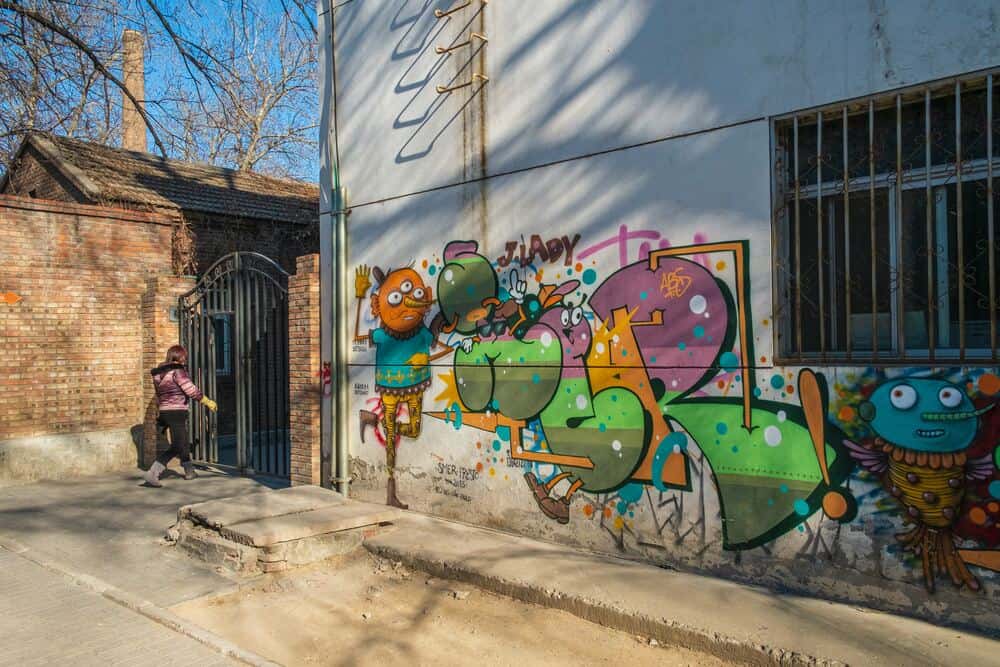
798 Art Zone is an artist’s haven created in a Bauhaus-designed ex-military factory. It’s peppered with some fine works of art, but it’s worth noting that up and coming artists are rapidly being ousted by rent increases, leaving it mostly inhabited by artists that are more established.
Cheaper and more adventurous art is still being created in Ai Weiwei’s Caochangdi Art District or Songzhuan Artist’s Village.
7. Take a Day Trip to The Great Wall of China
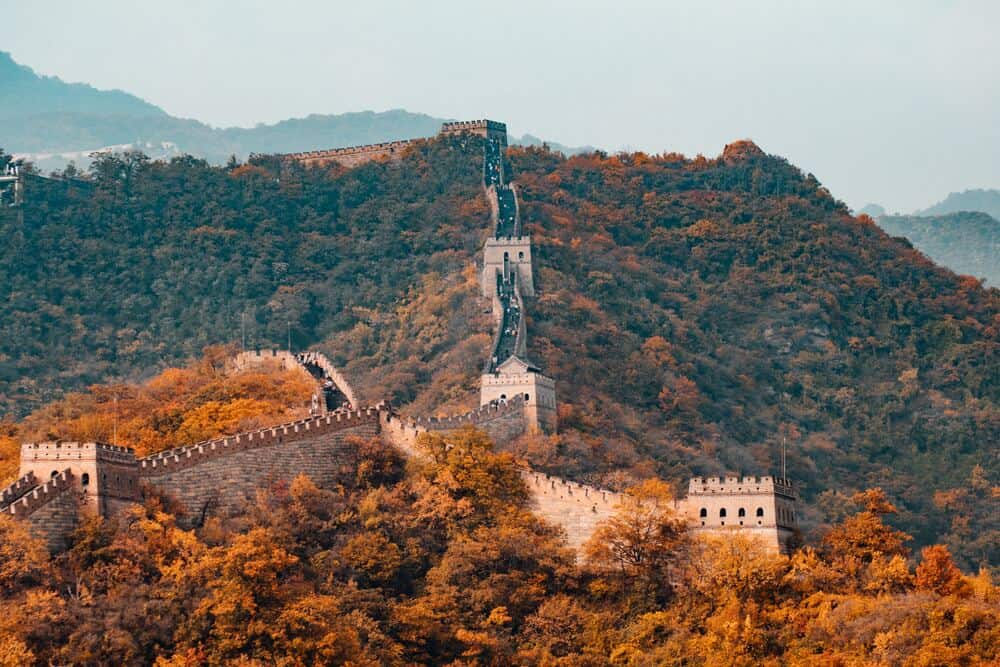
The most famous day trip from Beijing must be to the Great Wall of China. For those with only half a day, Badaling is very close to the city, but can be extremely busy.
For a different experience, it’s also possible to camp overnight there, on top of the Wall.
Slightly further away is Mutianyu – it’s a full day trip and a bit more climbing but you get to see unrestored wall rolling across the hills.
There are plenty of other ‘Wild Wall’ sections to enjoy hiking trails, but be careful as they can be poorly maintained and the emergency services won’t come and find you in the event of an injury.
If there’s time, take a trip to Cuandixia. It’s a village that has barely changed for 600 years. Stay overnight to experience the slower pace of rural village life, coal-heated beds and fresh and delicious locally grown food.
Read this post if you want to hike the Great Wall of China
8. Admire the Birds Nest
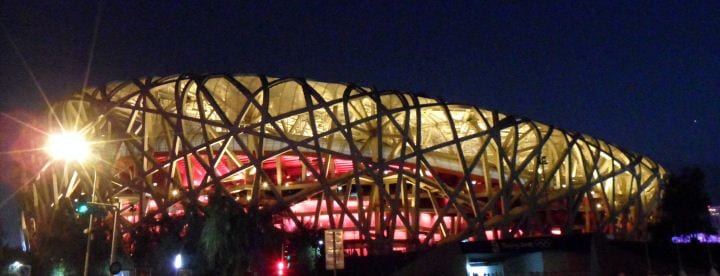
In the north of the city is the Beijing National Stadium, or Bird’s Nest. Used in the 2008 Olympics this stadium is best visited at dusk, just before the stadium and nearby Water Cube are colorfully illuminated at night.
The adjacent Olympic Park is a good place to catch a break from the crowds and traffic.
9. Explore The Summer Palace
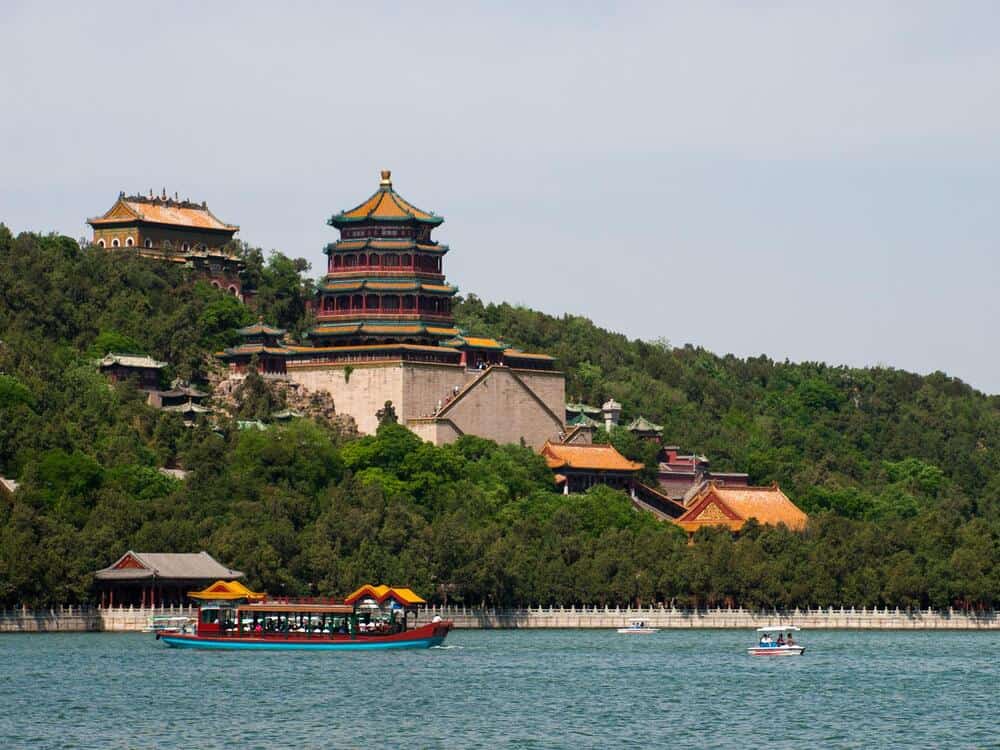
For a break from the crowds head west. Haidian district is home to the tranquil Summer Palace (once a holiday home for the imperial family), Fragrant Hills walking trails and the Beijing Botanical Gardens.
The Summer Palace was originally built as a royal garden in the 18th century, as a retreat for emperors seeking respite from capital.
With its magnificent palace grounds, intricate gardens, and backdrop of the serene Kunming Lake, it surely does offer what it was intended.
10. Look Out For Beijing’s Modern Architecture
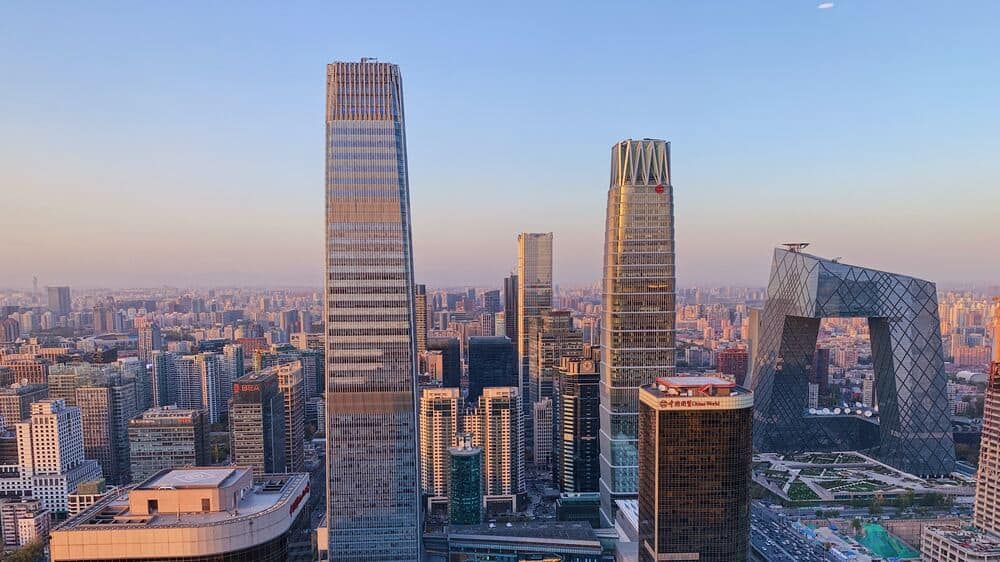
Beijing’s skyline is not only made up of ancient temples and palaces, but some modern architectural marvels as well.
Rising high above the city, the CITIC Tower, also known as China Zun, is Beijing’s tallest skyscraper and is a symbol of the nation’s progress and ambition.
Another iconic structure is the CCTV Headquarters building, an angular arch sometimes called ‘The Underpants’ – you’ll know it when you see it!
These contemporary buildings are a testament to China’s forward-thinking design and technology industry.
11. Try the Local Cuisine
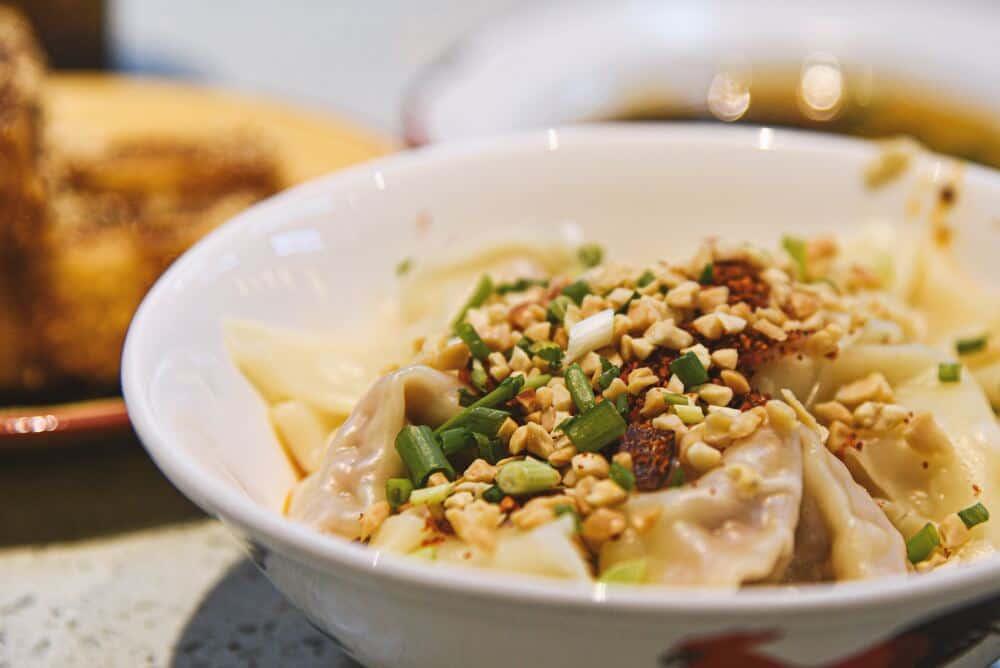
The best food outlets in Beijing are often the cheapest and busiest. The high turnover ensures that it’s fresh and usually made to order.
Any street will have bun or dumpling shops where a filling meal can be had for 4-8rmb. For more upmarket soup dumplings look for the Taiwanese Ding Tai Fung chain.
In the morning keep an eye out for carts selling my favourite, a Jian Bing Chinese pancake.
Half a Peking Roast Duck – the strip on the right is considered the best piece and is reserved for guests. Of course, nearly everyone will want to try Peking Duck.
The most hyped is DaDong, famed for its crispy skin – it’s excellent duck but the side dishes aren’t up to the same standards given the high price.
Most tour groups will visit a brand of Quanjude, but as with DaDong you might notice a distinct lack of Beijingers eating there.
A good compromise is Bianyifan, which has been serving duck since 1416 and is a perfect combination of excellent duck and other dishes.
Beijing is also home to some of the best examples of regional Chinese cuisines. If you’re not travelling further in China take the opportunity to try spicy yet delicate Sichuan hotpot, rich in flavour Yunnan dishes or rustic Xinjiang lamb kebabs.
For a special meal look for Imperial food, as served to the Emperors, but be prepared to pay handsomely. The Beijinger website has a useful directory of English-friendly restaurants.
If you’ve somehow tired of Chinese food, then Sanlitun is home to the majority of foreign restaurants.
The South East Asian food is of particularly high quality, whilst the Italian and American dishes might leave a lot to be desired, and cost many times the price of a Chinese meal.
12. Enjoy a Drink in Sanlitun
There are two main areas to go for a drink in Beijing – Sanlitun and the hutongs around HouHai Lake.
In warm weather, it’s hard to beat sitting by the lake with a drink, accompanied by the sounds of local musicians.
If it’s a little cooler head to Sanlitun where it’s possible to find everything from grungy music dives to stylish private clubs.
Be wary of suspiciously cheap fake spirits – the headache isn’t worth it – but do try Chivas Regal whisky with green tea.
13. Watch an Evening Performance
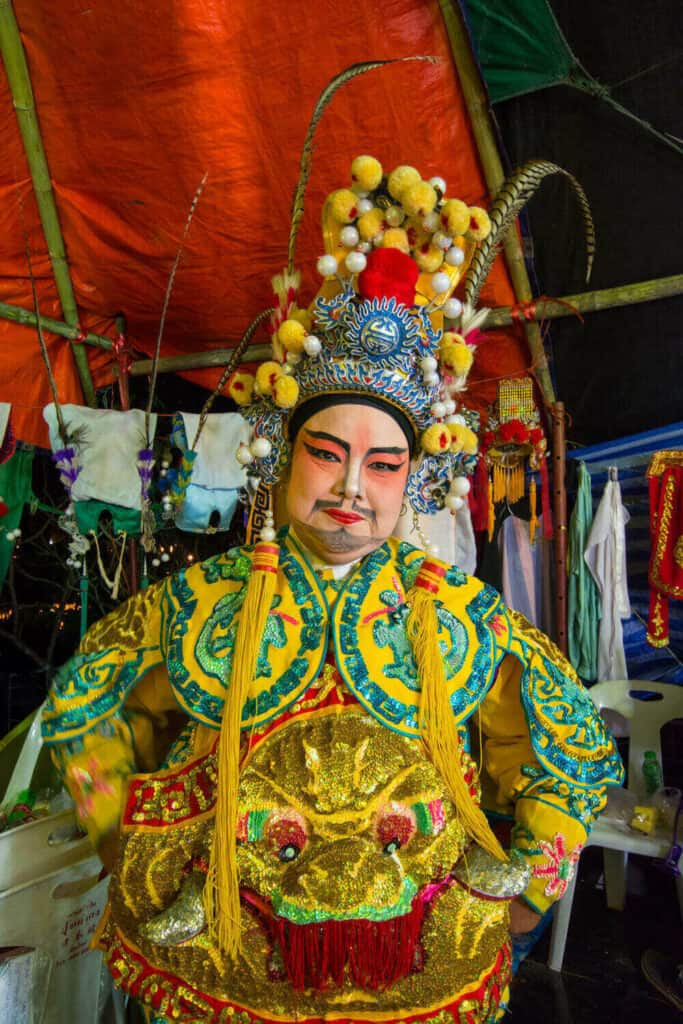
The most popular things to do in Beijing at night are watch the Peking Opera, check out athletic or Kung Fu Shows, or chilling out to live music in HouHai and Nanluoguxiang.
A Peking Opera, sometimes referred to as Chinese Opera, is known for its colorful costumes, intricate makeup, and graceful movements.
Each scene tells of Chinese history and folklore, with a blend of music, singing, acrobatics, and martial arts.
For non-aficionados, the Peking Opera can be a bit much to endure and many people leave at the first interval, so an alternative is to visit Prince Gong’s Mansion near HouHai for a tour of the gardens and a 15-minute opera performance.
14. Hit the Shopping Malls
For luxury brands, Wangfujing is the premier shopping street, closely followed by Sanlitun Soho, although be aware there’s a 50% luxury tax on many items so you’re unlikely to find a bargain.
For less authentic goods, try the Pearl Market or Silk Market. Haggling is essential here, but well-made fake clothes, bags, watches and jewellery can be bought very cheaply. The hiking gear looks good, but I wouldn’t want to be wearing it in an emergency.
Cheaper but less English-language friendly is the Zoo Market, opposite Beijing Zoo, and you can find some real gems in the Panjiayuan Antiques Market.
15. Attend a Festival in Beijing
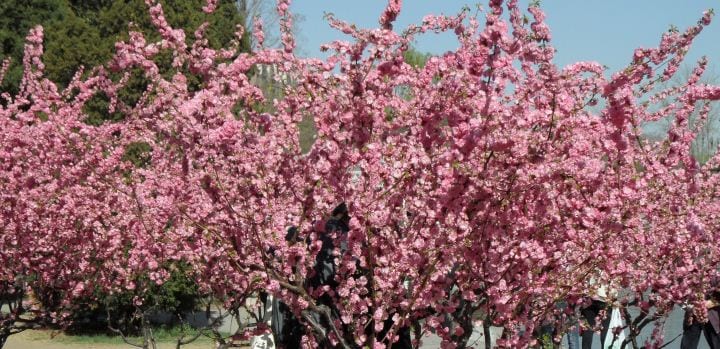
The absolute highlight is Chinese New Year when the city is a cacophony of fireworks for 15 days. It can wear thin after a week of sleepless nights…
The Cherry Blossom festival in YuYuanTan park is beautiful. Alternatively, the annual Lantern Festivals in the city parks provide a source of interesting nights out.
16. Head to the parks
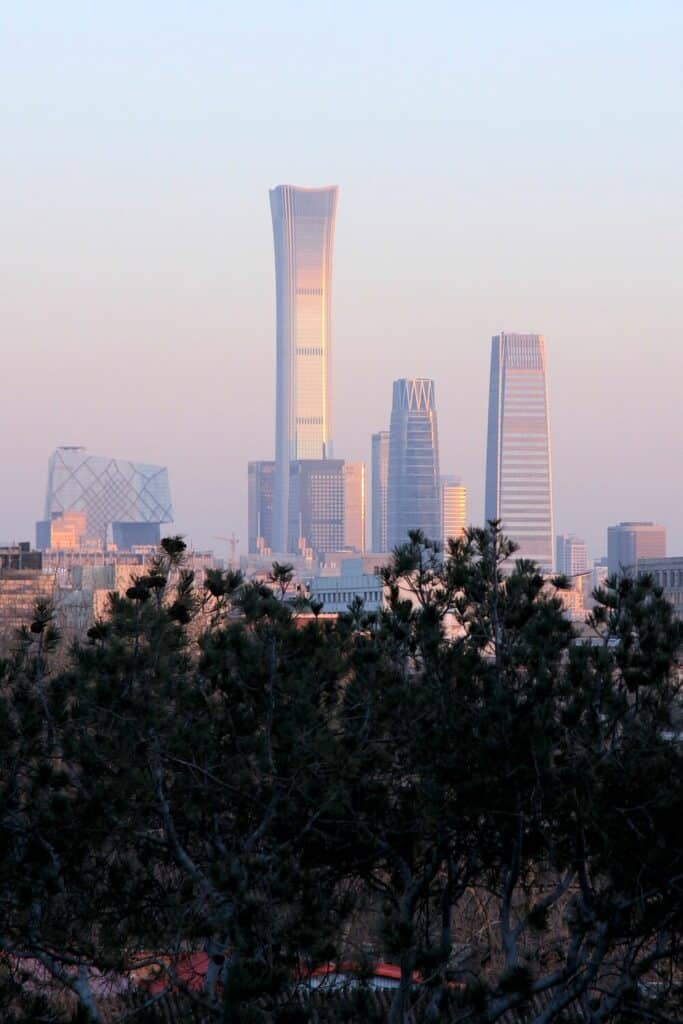
If you need to escape the bustling metropolis, there are many urban parks that offer a serene oasis where nature can soothe the senses.
The fragrant gardens of Beihai Park are known for their tranquil lakes and ancient pagodas, while the vast expanse of Jingshan Park offers breathtaking vistas of the Imperial City.
Another popular park is Ritan Park which has an abundance of vibrant flora, or find serenity amid the harmonious blend of art and nature at the Olympic Forest Park.
Head to parks early to see people practicing Tai-Chi, or late to see them ballroom dancing. Feel free to join in!
17. Get a Foot Massage
After all this walking around, try a foot massage. US$10 will get you two hours of pampering, including healthy snacks and fruit juices.
Skilled therapists use ancient techniques passed down through generations, plus use aromatic oils and play soothing music create to create an ambiance of serenity.
If you’re in need of rejuvenation, it’s one of the top things to do in Beijing!
18. Visit the Ming Tombs
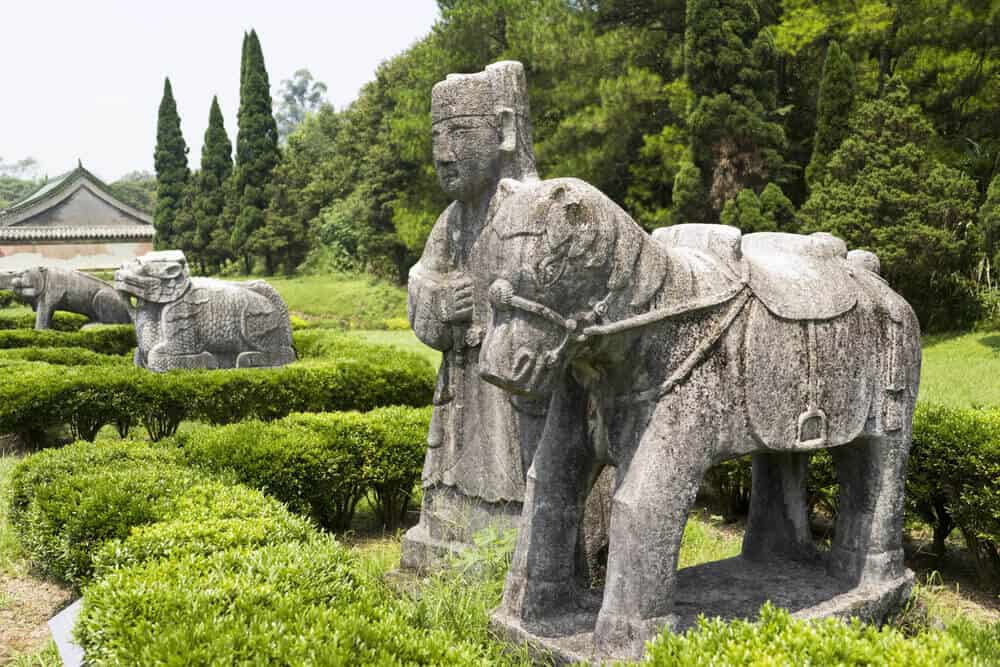
Located on the outskirts of Beijing are the Ming Tombs. These mausoleums, built during the Ming Dynasty, hold the remains of thirteen emperors and their consorts.
Each tomb is an architectural marvel, reflecting the beliefs and geomantic theories prevalent during that era.
The tombs’ strategic location and design showcase the profound influence of Fengshui in ancient Chinese culture.
19. Admire Views from The Bell Tower/ Red Drum Towers
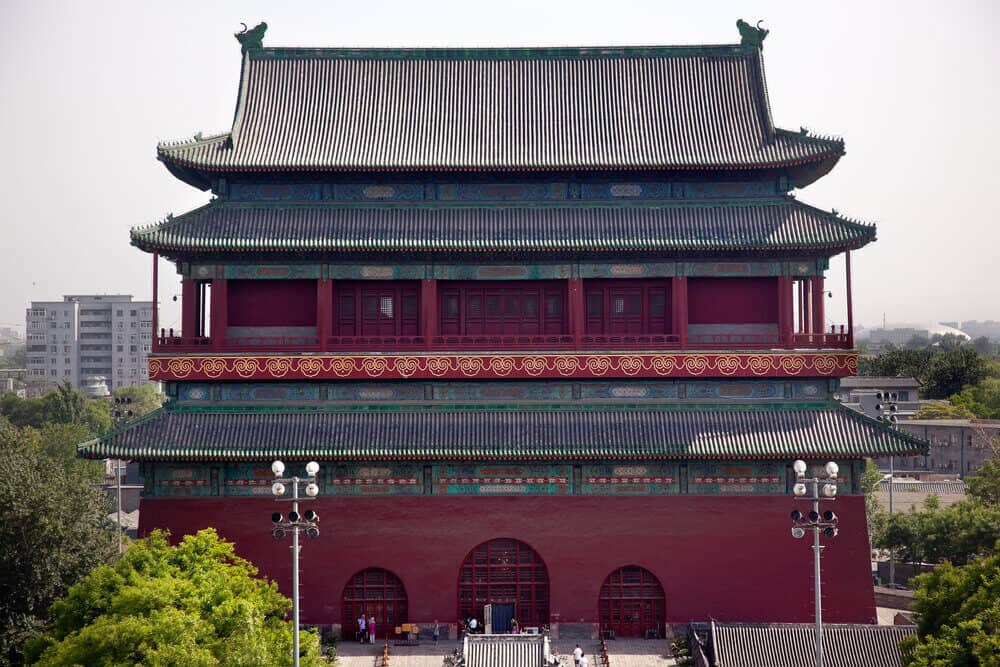
If you want to get amazing views of the Beijing skyline, head to either The Bell Tower, or the Red Drum Towers, which offer amazing vistas of the city.
Dating back to the Yuan Dynasty, the towers served as a vital timekeeping center, where bronze clepsydras and resounding drums dictated the rhythm of daily life.
As you ascend its ancient steps, panoramic views of the city become present, but the towers also hold significance to the Chinese people and of Beijing’s past.
Getting To and Around Beijing
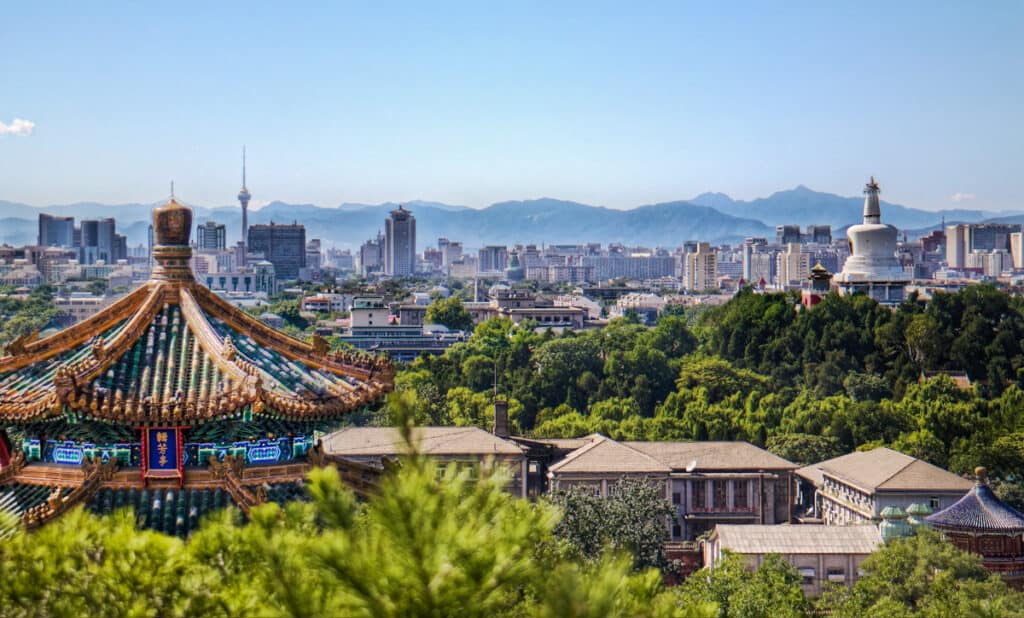
From Europe, the cheapest way to get to Beijing is always AeroFlot, but I tend to pay a little extra and use Lufthansa for more comfort and a working entertainment system.
Travelling to the US, American Airlines or Delta are cheapest, but I prefer Air China for the on-board dim sum.
If heading south to New Zealand or Australia, domestic flights in China can be very cheap, so it’s sometimes an option to fly via Shenzhen or Guangzhou and continue from there on an international ticket.
The next best option is trains. They’re very cheap, but the distances involved can take multiple days to cover. This is improving rapidly as China introduces high-speed rail services across the country.
When getting around Beijing, avoid the pedicabs in Beijing.
The cheapest way to get around Beijing is by metro – the price differs depending how far you go, but it never gets more expensive than ¥7 RMB ($0.96 USD).
It’s best avoided at rush hour. Many stations have maps in English but it’s worth carrying a subway map round anyway.
The easiest way to get around Beijing is by taxi. Prices start from ¥14 ( US$ 1.92) and costs ¥2.30 ($0.32) per kilometer afterwards.
Note that there’s a surcharge after 2km that won’t appear on the meter, so be prepared to pay the extra, but there’s no expectation of tipping.
Make sure you have your destination written down in Chinese – hotels can assist with this. To hail a taxi, don’t point – extend your hand with the palm downwards and waggle your fingers.
Whilst the taxis are generally helpful, there are a few unscrupulous drivers so it’s worth watching that the meter goes up evenly, and your change is real.
Stay away from the three-wheeled pedicabs. They’re dangerous and will almost always try to scam passengers, even Chinese.
Walking is an option around the major tourist sites such as Qianmen hutongs, Tian’anmen Square or Wangfujing. Most streets run North-South or East-West, so map reading is straightforward.
Beijing city is very flat but spread out, so if you travel much farther afield you’ll need to find transport – many hostels also offer a bicycle hire service.
In the hutongs, you can give your feet a break by hiring a rickshaw but negotiate a price before getting in.
Finding WiFi in Beijing
It’s very easy to find WiFi, but you should be aware that the government censors many social media web sites such as Facebook, WhatsApp, and Twitter.
Google sometimes works, such as Gmail, but Google Maps doesn’t. Wikipedia is often blocked, but Wikitravel is generally OK.
Internet addicts may wish to invest in a cheap VPN to bypass the blocks if you’re spending a few weeks in China.
If you want to access these while you’re in China, you’ll need to purchase a VPN. You can try a VPN from NordVPN here, which comes highly recommended.
To find free Wifi you can go to international chains such as Starbucks, McDonalds, etc, or any local coffee shop – Maan is particularly fast. Some of these require a local telephone number to get free access.
There are plans to provide a WiFi cloud over Beijing, but it’s still in development.
You can also get really cheap eSims from Airalo. You can set it up so it’s ready to go as soon as you arrive. That way you don’t have to worry about finding a local sim card. See prices and availability here.
Best time of year to visit Beijing
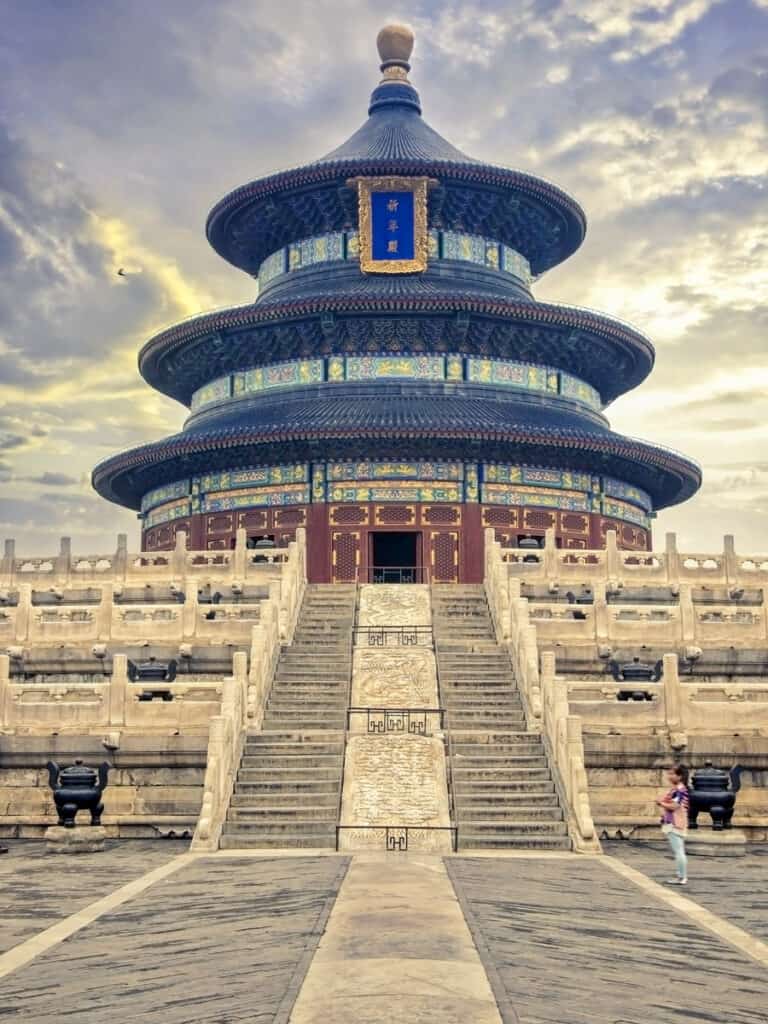
The best time to visit Beijing is definitely the autumn from September/October. The winter brings the cold winds from Siberia and the spring breeze carries the dust from the Gobi Desert.
Summer can be very hot, whilst autumn is a much more comfortable temperature and the gentle breeze keeps the pollution at bay.
Avoid travelling during the Chun Yun migration which usually takes place in January and February (15 days before Chinese New Year), when half of the cities 20 million inhabitants go home to the countryside for their annual holiday.
Tourist sites are packed, whilst public transport and restaurants are understaffed.
Where to stay in Beijing
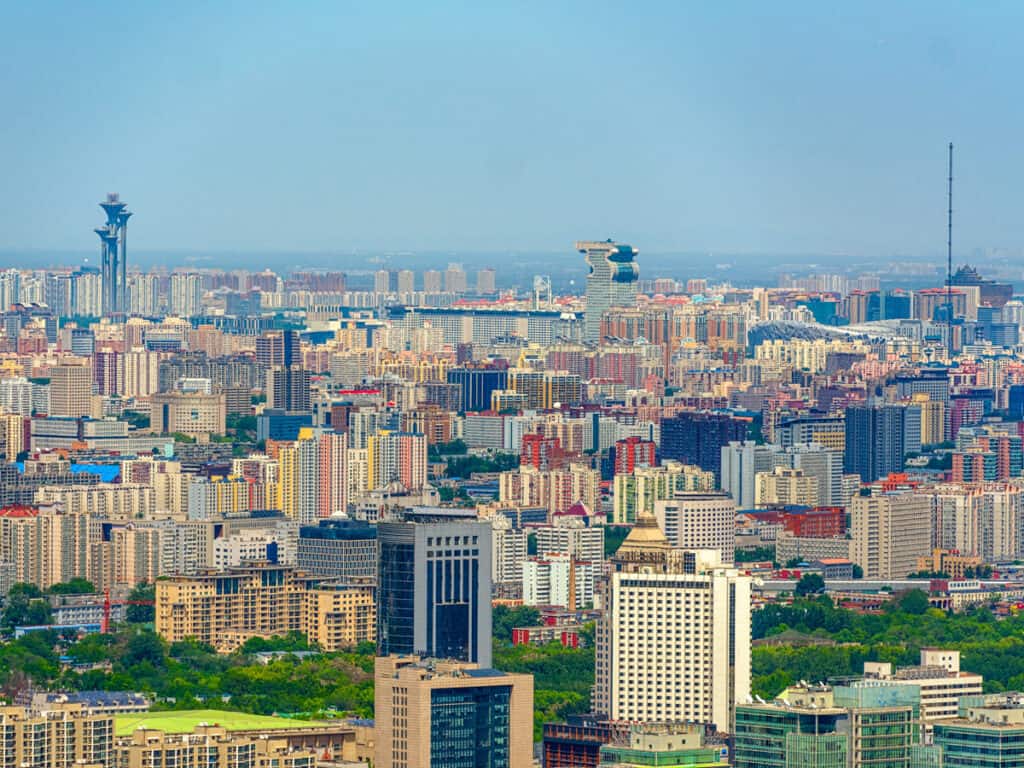
For sightseers, the area east of the Forbidden City is full of cheap accommodation. For hostels, there’s the well located YHA Peking International Youth Hostel.
For a budget hotel, friends have enjoyed the modern Hotel Kapok, again right next to the Forbidden ,City.
A couple of blocks east you come to Wangfujing where the high-end hotels are clustered.
The Mandarin Oriental is a personal favourite, and towers over DongHuaMen night market (due to reopen n 2016). Alternatively, look for a family-run traditional courtyard hotel in the same area.
If you’re going to be spending every night in the bars, it would be more convenient to be over by Sanlitun, where you’ll find most of the expats and backpackers hanging out in Bar Street.
For more places to stay in Beijing choose from the largest range of hotels, apartments, and guesthouses using the map below
Final Thoughts
There’s a lot not to love about Beijing – the pollution can be terrible, the crowds overwhelming and the traffic deadly, but once you cut through all of that and get on the streets the variety is amazing.
Everywhere you look you can find the blurring of borders between East & West, new & old, traditional and contemporary.
Walk through the quieter areas and every corner has an adventure, a friendly face or simply something very strange going on.
There aren’t enough capital cities where you don’t bat an eyelid when you see someone in their pyjamas singing opera and walking backwards with their pet bird to an alfresco tea dance.
BIO: After leaving work in 2006, and travelling round over 80 countries, Steve has based himself in Beijing. Follow his blog and ask any questions you may have at You’re Not From Around Here, Are You?
More China Travel Guides
Need more inspiration for traveling to China? Check out these other resources!
- Things to Do in Shanghai
- 34 things to know about China before you visit
- 2 Week China Itinerary. Best places to visit
- Climbing the Great Wall of China
- Hiking the Tiger Leaping Gorge in China
- Incredible Things to do in Hong Kong
- First timers guide to Beijing
Pin to Share on Pinterest
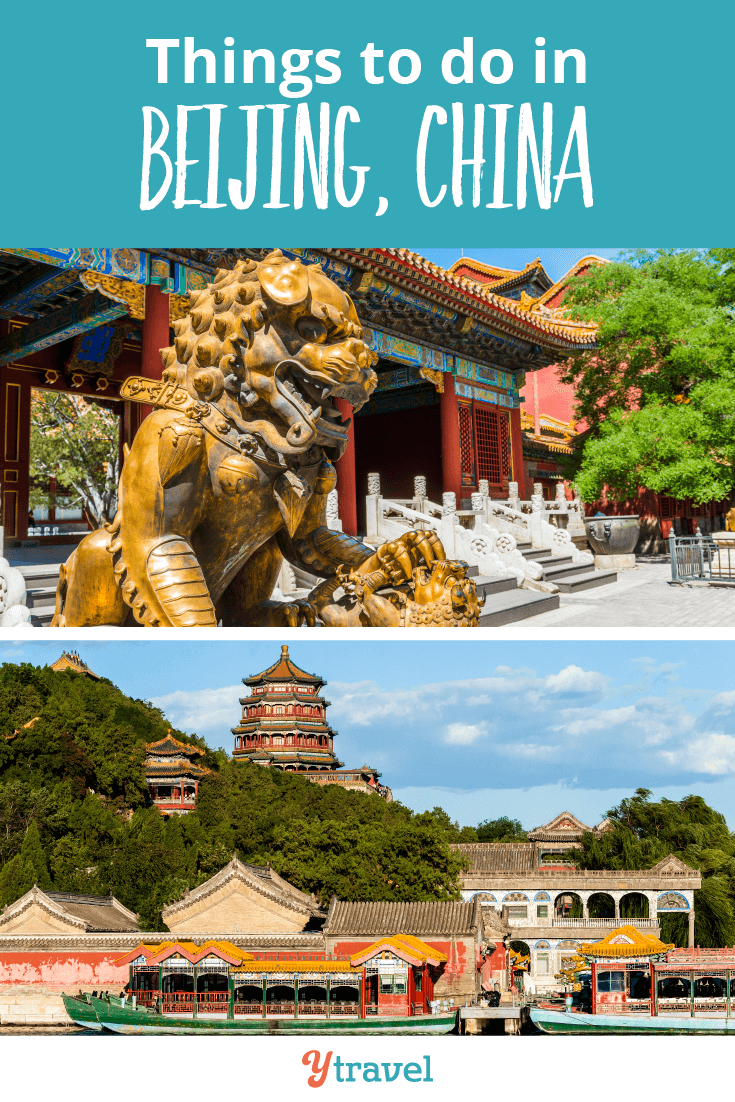
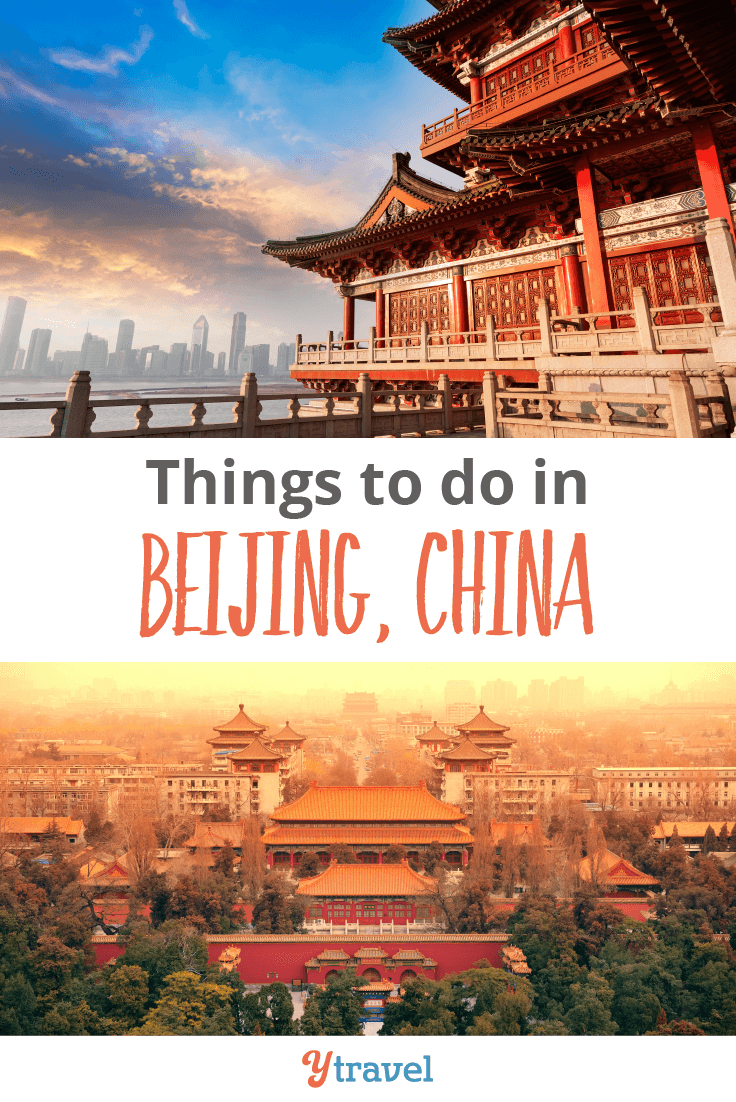
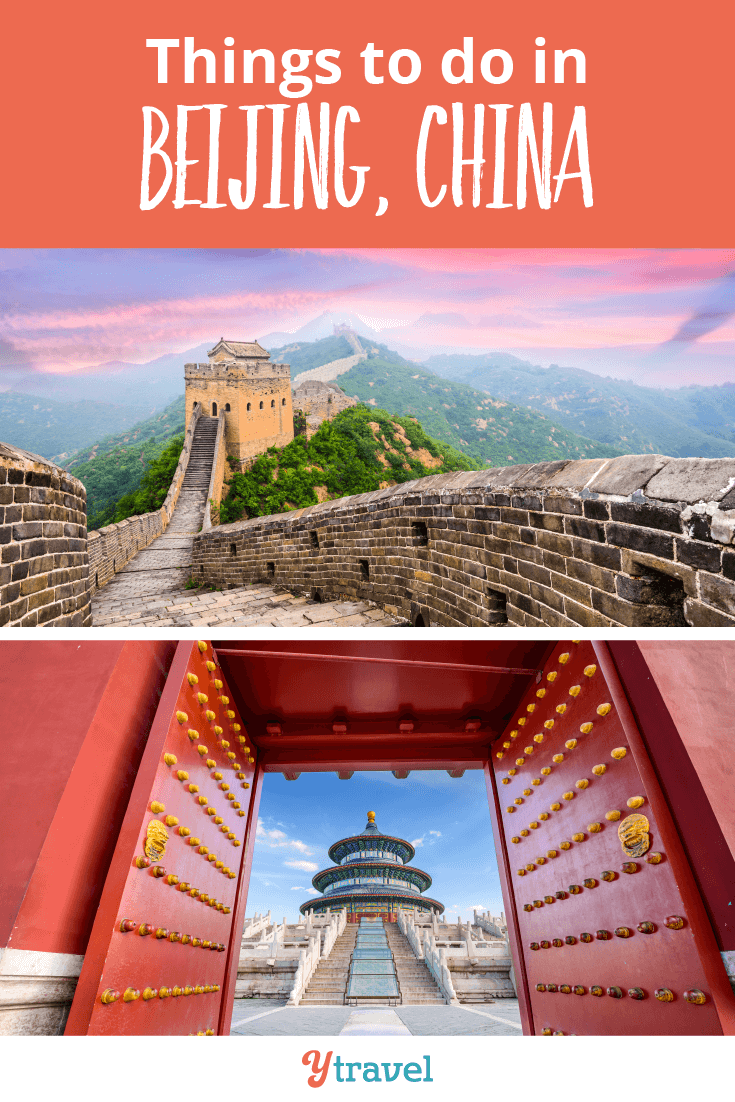
Do you have any tips on what to do in Beijing? Please share in the comments below.
Beautiful article. Very specific and accurate. You had me at DaDong. Ducks are delicious! Also, thank you for warning us about the Beijing zoo. I’ve always wanted to see pandas but not when they’re looking sad and uncared for.
Hi Alexa,
Yes I very much enjoyed this post. Found it very informative and helpful. Stepehen did a great job!
Great post! I have a friend touring through Beijing right now – I think I’ll pass this on to him!
It’s funny, you’re the second person to recently speak of the 798 Art Exhibit – up until then I’d never heard of it.
Hi Margyle – 798 is great to visit. If they’re there right now there’s a series of laid back Summer music festivals and afterparties on at 798 in the evenings – check TheBeijinger.com for details.
This is so perfect – we arrive in 3 days! mMmm I want that pancake!
Great interview. I’d love to try the Jian Bing Chinese pancakes.
Great travel bog. I love Beijing and the food is amazing. Just wish you could find the traditional Chinese dishes in the west.
Beijing is a very nice place.. I will be going there when vacation comes. Thank you for posting this. Now i have knowledge on where to go once I’m there.
Get More
Beijing is indeed nice. I will go there someday. Thank you for posting this. It accentuated the beauty of Beijing.
Hardiplank siding installation houston
Wow…good report…Insect Food makes me want to spit up. I’m surprised with the locals people who love this food.
Just wanted to thank you for a great blog you gave some very helpful tips that we have written down before we leave next week. Thanks heaps. Fiona from Australia xo
Lovely article, very useful for me. I has been to China a few years ago on business trip. However, i think that there are too many interesting destinations that i missed out last time. Your article help me a lot in preparation. Thank you.
Beijing can not be forgotten, a place full of historical value, and the food makes me want to go back there again
Since watching the olympics a few years back happen here I have always wanted to see the birds nest. I do think it is a lovely design and would love to experience it first hand
I love this post! And your one for Shanghai too!
I made links to them in my travel blog.
Check it out if you want to: http://wp.me/p3TG0V-2O
I will definitely be exploring your site!
-Rebecca from lost-in-spice.com
Thank you for that Rebecca!
Really a great article – I wished I had something like this when I visited Beijing back in 2009. Not to many people mention the 798 Art Exhibit area, as a art lover and designer I highly recommend visiting the area, it is a wonderful way to connect with contemporary culture in China.
Wow, great tips for my research! I hope to be there by this time next year.
Love the post, here’s an interesting article on the “culture shock” experienced in China.
Thanks for the thorough article, Craig. Nothing like starting your day with some jianbing. Yum!
handy tips thanks guys!
Heading to Beijing in October ! Cant wait!!!
Hi
Im just back from Beijing an amazing place.
Just letting you know I used your guide and Moving Postcards Beijing http://www.movingpostcards.tv/beijing and found both very useful.
Thanks
Just returned from Beijing. Agree w/ your comments but most in our group were surprised buy how expensive it was & unfortunately ran into a lot of the art student scammers & went to spa for foot massage & got up-charged for salts they put in water, when we didn’t ask for it, overall most felt the marketers tried to cheat them w/ giving wrong change, saying they had no smaller bills ect. Also, squat toilets at mcdonalds. Loved the Great Wall !
This is really a good travel post of Beijing Tour… It is the first time I visit your blog, but I was extremely impressed. Keep posting as I am gonna come to read it everyday!
Its really a very helpful blog for visitors and tourists visiting to Beijing. I want to suggest my friends who are going to Beijing Tours visit this below site for getting attractive Beijing tour packages. http://www.beijing-privatetour.com/
Just a quick note that the Donghuamen Night Market was closed recently due to santiation issues. If you’re interested in a food tour in Beijing, check out the 3-hour guided walking food tours of Beijing that show you all the best hidden gems in the backalleys: http://www.untourfoodtours.com
I was just in Beijing and have never seen such a crowd in a subway.
It. Was. An. Experience
Mick
Is there anywhere I can hook up with other couples and singles to make tour reservations. If you have 2 ,such as my friend and I the tours are $3-4 Hundred but if you have 5 it’s usually less than $100/ea.
Hi Guys,
Awesome article, very informative! I’ve placed a link for it on my website to provide my readers with the best information possible, I hope you don’t mind.
Love,
Angelina DiGiovanni
My daughter is head to China for her senior project. She has a peanut tree but allergy. What do you recommend for foods to avoid? She will have a translator with her but still I have a bit of concern. I read that water is not drinkable. Tips on how to stay hydrated would be appreciated.
They will be traveling to China-Beijing, Hangzhou, and Shanghai
They are not visiting the countryside .
Can you suggest apps to use to keep in touch with us?